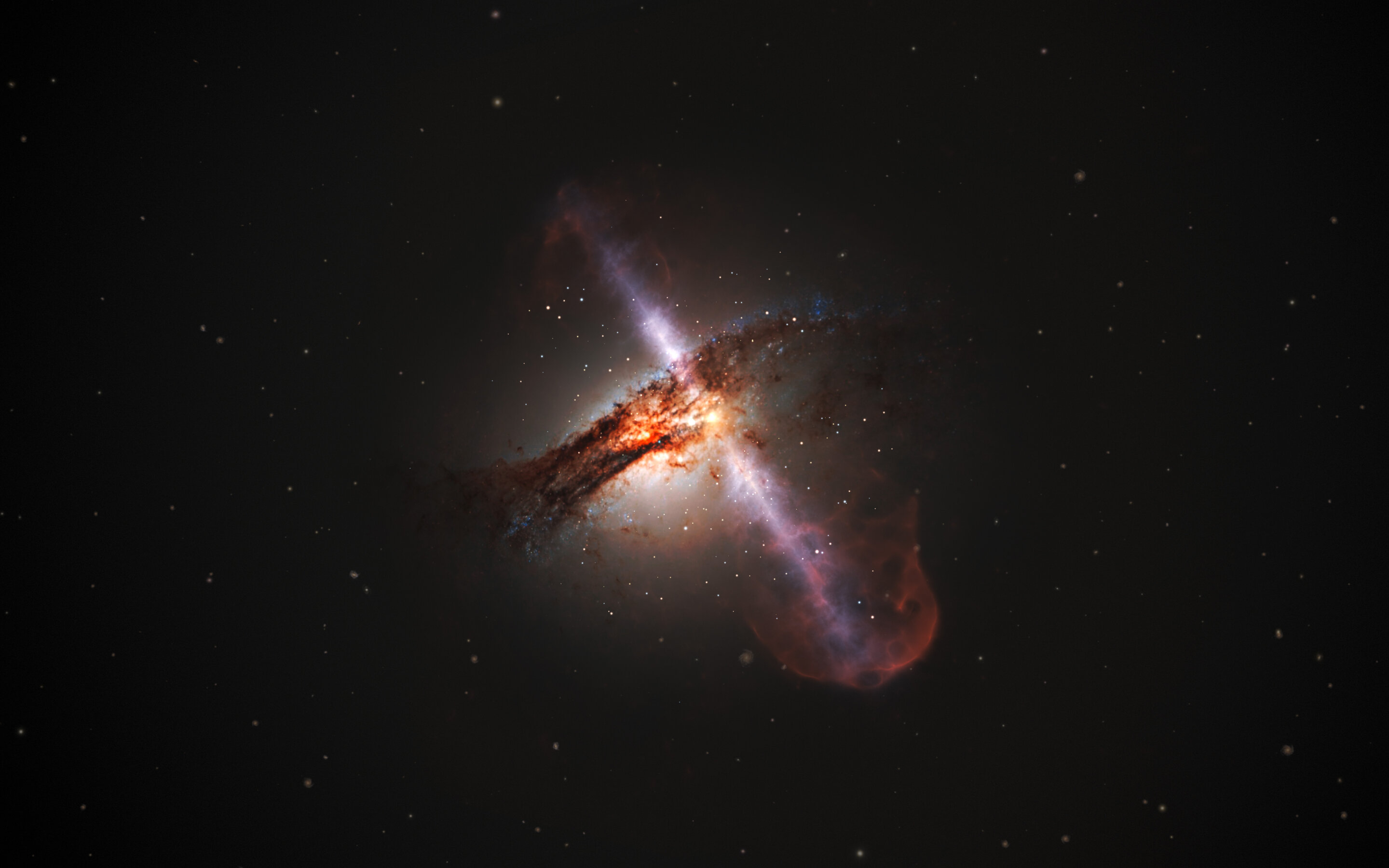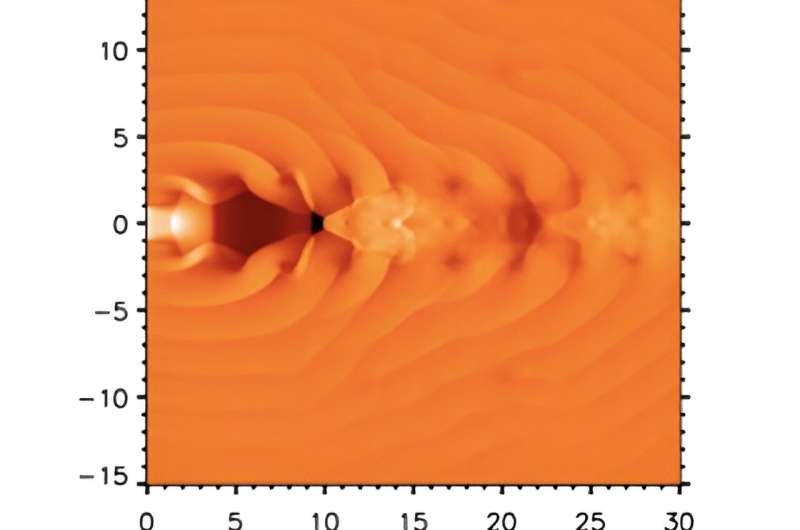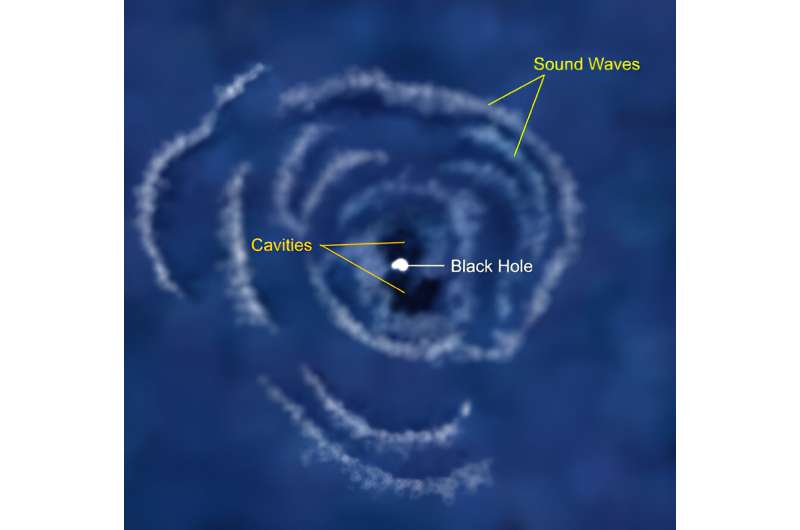New research shows how galaxies avoid early death


An artist’s impression of bipolar jets of gas emanating from a supermassive black hole at the centre of a galaxy. Image credit: ESA/Hubble, L. Calçada (ESO)
According to a new study, galaxies may escape early death because they have a “heart and lungs” that effectively regulate their “breathing” and prevent them from spiraling out of control.
If they didn’t, the universe would have aged much faster and we would only see huge “zombie” galaxies full of dead and dying stars.
This is the result of a new study published in Monthly Notices of the Royal Astronomical Societywhich investigates one of the great mysteries of the universe – why galaxies are not as big as astronomers would expect.
Something seems to be stifling their enormous potential by limiting the amount of gas they can absorb to become stars. This means that instead of growing endlessly, something inside them is resisting the seemingly inevitable pull of gravity.
Astrophysicists at the University of Kent now believe they have solved the mystery. They suspect that galaxies could actually control their growth rate through their “breathing.”
In their analogy, the researchers compared the supermassive black hole at the center of a galaxy to its heart and the two bipolar supersonic jets of gas and radiation that they eject into the airways that supply a pair of lungs.
Pulses from the black hole – or “hearts” – can result in jet burst fronts that oscillate back and forth along the two jet axes, similar to how the diaphragm in the human body moves up and down in the chest to inflate and deflate both lungs.
This may cause the jet energy to be transferred far into the surrounding medium, just as we exhale warm air, leading to a slowing of gas accretion and the growth of the galaxy.
Graduate student Carl Richards developed this theory after creating new, never-before-tested simulations to investigate the role that supersonic jets might play in inhibiting galaxy growth.
They made the black hole’s “heart” pulsate and the jets were under high pressure – similar to a form of high blood pressure if you extend the comparison to the human body. This caused the jets to “act like bellows,” he said, emitting sound waves “like ripples on the surface of a pond.”

Two different examples of simulating a side of symmetric bipolar jets, with pressure waves propagating across the extragalactic medium. Here, pressure variations are shown using a red temperature color scale (dark = low pressure, light = high pressure). Each jet enters from the left with a pressure that drops rapidly as it pushes against the surrounding medium. The axes are dimensionless distance scales. Image credit: C Richards/MD Smith/University of Kent
The phenomenon is similar to the sound and shock waves created on Earth when a bottle of champagne is opened, a car screeches, rockets are launched, and pressure vessels burst.
“We realized there had to be some way for the jets to support the body – the gas surrounding the galaxy – and that’s exactly what we discovered in our computer simulations,” Richards said.
“The unexpected behavior became apparent when we analyzed the computer simulations of the high pressure and made the heart pulse. This sent a stream of pulses into the high-pressure jets, causing them to change shape due to the bellows-like effect of the oscillating jet shock fronts.”
These pressurized jets effectively expanded “like air-filled lungs,” the researchers said.
They transmitted sound waves in the form of a series of pressure waves into the surrounding galaxy, which were proven to suppress the growth of the galaxy.
There is some evidence of waves in extragalactic media, such as those observed in the nearby Perseus cluster of galaxies in association with enormous hot gas bubbles, which are believed to be examples of sound waves.
It was already assumed that these waves were responsible for maintaining the environment of a galaxy, but at that time a mechanism for their generation was still missing.

The sound waves (ripples) in the hot gas filling the Perseus Cluster are seen in this artist’s impression. They are thought to be created by voids blown out by jets from a supermassive black hole (bright white spot) at the center of the galaxy. Image credit: NASA/NASA/CXC/M.Weiss
Conventional cosmological simulations are therefore unable to explain the flow of gas into galaxies, one of the great mysteries of the universe. They rely on the highly active black hole at the heart of a galaxy to provide some resistance.
“This is not easy, however, and we have limitations on the type of pulsation, the size of the black hole and the quality of the lungs,” said co-author Professor Michael Smith. “Breathing too fast or too slow will not produce the life-giving shocks needed to maintain the galactic medium while also powering the heart.”
The researchers concluded that a galaxy’s lifespan can be extended by using its “heart and lungs,” with the supermassive black hole at its core helping to inhibit growth by limiting the amount of gas that collapses into stars at an early stage.
This, they say, contributed to the formation of the galaxies we see today.
Without such a mechanism, galaxies would have used up their fuel by now and become extinct, as is the case with some in the form of “red and dead” or “zombie” galaxies.
More information:
Carl Richards et al., Simulations of pulsed overpressure jets: formation of bellows and waves in galactic environments, Monthly Notices of the Royal Astronomical Society (2024). DOI: 10.1093/mnras/stae1498
Provided by the Royal Astronomical Society
Quote: New research reveals how galaxies avoid early death (July 11, 2024), accessed July 11, 2024 from https://phys.org/news/2024-07-reveals-galaxies-early-death.html
This document is subject to copyright. Except for the purposes of private study or research, no part of it may be reproduced without written permission. The contents are for information purposes only.



